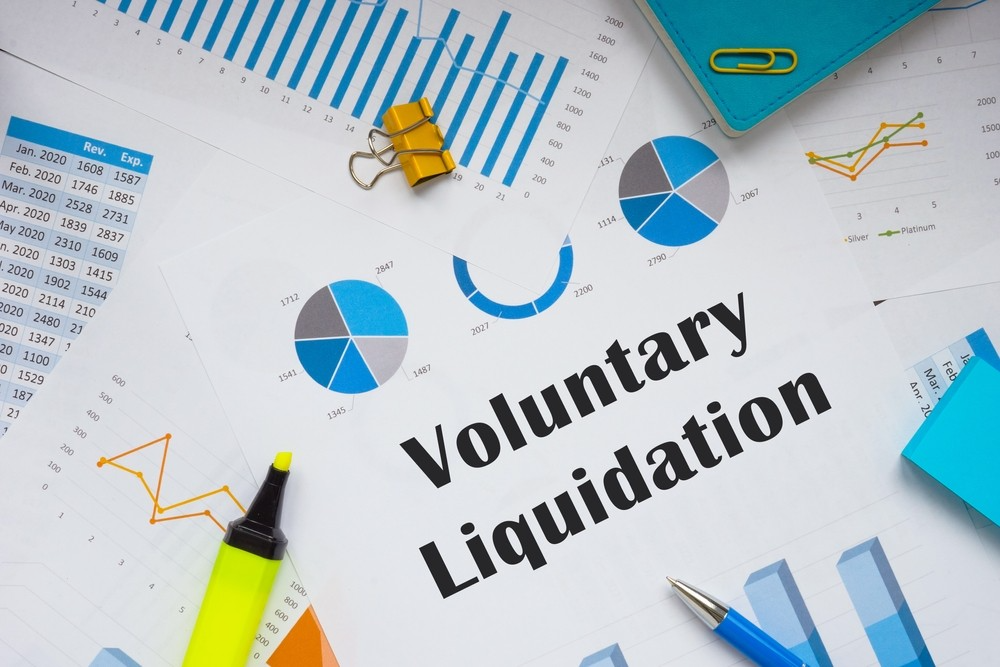Voluntary Liquidation / Strike-off Company
Home
Voluntary Liquidation / Strike-off Company
Liquidating or striking off a solvent business requires a structured and legally sound approach. At AMG Corporate Avenues LLP, we help companies initiate and complete the voluntary liquidation process in full compliance with the Insolvency and Bankruptcy Code (IBC), 2016 and applicable corporate laws.
- From board resolution to closure, we handle it all
- Ensure compliance with the Insolvency and Bankruptcy Code (IBC), 2016
- Transparent, well-documented execution with regulator coordination
- Minimize delays and risks with expert legal oversight

What is Voluntary Liquidation?
Voluntary liquidation is the process of closing a solvent company through a formal legal route. Unlike compulsory liquidation initiated by creditors or the tribunal, voluntary liquidation is undertaken at the company’s own discretion when it has no outstanding debts or has repaid all liabilities.
Under Section 59 of the Insolvency and Bankruptcy Code (IBC), 2016, any company that is solvent and not being liquidated due to insolvency may voluntarily liquidate its operations by appointing a liquidator and following due process. Its objective is to settle all liabilities and then distribute the remaining assets among the shareholders.
Reasons for Voluntary Liquidation
- Strategic Exit or Business Restructuring
When companies plan mergers, acquisitions, or restructuring, certain legal entities may become redundant and are best liquidated. - Completion of Business Purpose
Entities formed for specific projects or joint ventures may choose to dissolve after successful completion. - Shareholder Resolution
The company’s shareholders may collectively decide to cease operations and liquidate the entity. - Avoid Future Liabilities
Dormant companies often opt for voluntary liquidation to avoid future compliance costs or unanticipated liabilities. - Non-Operational Status
Businesses that are no longer trading and have no plans to resume may find liquidation more cost-effective than ongoing compliance.
Process of Voluntary Liquidation
Agreements serve as the groundwork for defining intent, protecting interests, and creating the foundation for future contractual relationships. Here are the primary types of legal agreements we offer:
Board Meeting & Declaration of Solvency
Special Resolution by Shareholders
Appointment of an Insolvency Professional as Liquidator
Public Announcement and Communication to Authorities
Settlement of Claims & Asset Realization
Distribution to Shareholders
Preparation of Final Report & Filing with ROC
Company Dissolution
Documents Required for Voluntary Liquidation
- Board Resolution for Liquidation
- Declaration of Solvency by Directors
- Audited Financial Statements of the Company
- Shareholders’ Special Resolution
- Appointment Letter of Insolvency Professional
- Statement of Assets and Liabilities
- List of Creditors and Proof of Claims
- Final Report by Liquidator
- Bank Account Closure Proof
- Application to ROC for Dissolution

Why Choose AMG Corporate Avenues LLP for Voluntary Liquidation?
Why Choose AMG for Your Contracts & Agreements
Expert Legal and Insolvency Advisory
We bring a deep understanding of IBC, Companies Act, SEBI, FEMA, and ROC compliance, ensuring seamless execution.
End-to-End Process Handling
From drafting resolutions to filing the final application for dissolution, we manage everything with transparency and timelines.
Registered Liquidator Network
We work with licensed Insolvency Professionals registered with IBBI to ensure the legal standing of the liquidation process.
Customised Documentation & Reporting
We draft, verify, and file all documents—tailored to your corporate structure and business goals.
Advisory on Exit Strategy
We guide promoters and directors on the most efficient and compliant way to exit without exposure to future risks.
Frequently Asked Questions (FAQs)
Yes, but only if the company can repay all debts within 12 months, and directors must provide a declaration of solvency.
Typically, it takes 6 to 12 months, depending on the size of the company and the complexity of the assets and claims.
Yes, the appointment of a licensed liquidator registered with IBBI is a legal requirement under IBC.
Yes, a solvent company that has no plans to continue operations can opt for voluntary liquidation.
Once dissolved, the company ceases to exist as a legal entity and is removed from all statutory registries, including the MCA.
Yes, LLPs can also undergo voluntary liquidation, subject to compliance with the LLP Act and IBC provisions.
